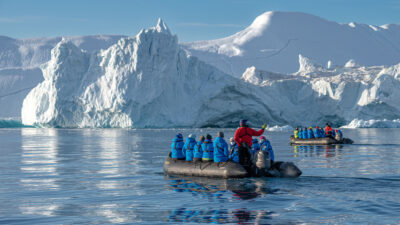Article | Canadian High Arctic and Greenland
Safeguarding a Precious Arctic Seascape: How Inuit Created the Foremost Marine Conservation Area in Canada
By Aaron Spitzer | January 27, 2021
Related expedition: Greenland and Arctic Canada: High Arctic Explorer and The Northwest Passage

© Dennis Minty
Powell Inlet, Tallurutiup Imanga










